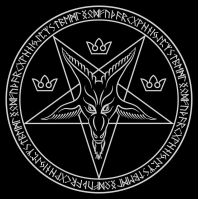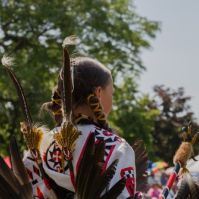In a world where big religions like Christianity, Islam, Hinduism, and Buddhism get most of the attention, it's easy to forget about the many smaller religions that people follow around the world. These lesser-known religions may not have as many followers, but they have amazing beliefs, colorful rituals, and rich traditions that are very meaningful to those who practice them. Let's take a look at some of these lesser-known religions and what makes them special.
Shinto: The Spirit of Japan
Shinto is the traditional religion of Japan. It centers around kami, which are spirits or gods found in nature, like in trees, rivers, and mountains. Shinto doesn't have strict rules or holy books. Instead, it focuses on connecting with nature and the spiritual world.
Shinto Practices and Traditions
- Shrine Visits: Shinto shrines are important places where followers go to honor the kami. People visit shrines to receive blessings, especially during important life events like births, weddings, and New Year.
- Festivals (Matsuri): Shinto festivals, called matsuri, celebrate local kami. These festivals often include colorful parades, traditional music, and ritual dances.
- Purification: Purity is very important in Shinto. Rituals like misogi, which involves washing with water, are done to cleanse the body and spirit.
Shinto rituals are all about living in harmony with nature and being grateful for the world around us.
Zoroastrianism: The Religion of Fire
Zoroastrianism is one of the oldest monotheistic religions, meaning it believes in one god. It started in ancient Persia, which is now Iran. Followers worship Ahura Mazda, the supreme god, and believe in a constant struggle between good and evil.
Zoroastrian Traditions and Beliefs
- Sacred Fire: Fire is very important in Zoroastrianism. It represents truth and the divine. Temples often have an eternal flame that symbolizes Ahura Mazda's presence.
- Good Thoughts, Good Words, Good Deeds: This phrase sums up the core beliefs of Zoroastrianism. It encourages followers to be good and make moral choices.
- Navjote Ceremony: This is the initiation ceremony for young followers. They wear special clothes called sudreh (a sacred shirt) and kusti (a sacred cord) as a sign of their faith.
Even though there are not many Zoroastrians today, their ideas have influenced many other religions, including the concepts of heaven, hell, and judgment.
Yoruba Religion: A Rich Spiritual Tradition
The Yoruba religion comes from West Africa and includes mythology, divination, and rituals. It honors a group of deities called Orishas, each representing different forces of nature and parts of human life.
Yoruba Practices and Rituals
- Orisha Worship: Each Orisha has its own personality and is worshipped with songs, dances, and offerings. Shango, the god of thunder, and Oshun, the goddess of love, are two of the most well-known Orishas.
- Divination (Ifá): Babalawo, or priests, perform divination rituals to communicate with the spiritual world and help guide people in their lives.
- Honoring Ancestors: Ancestors are important in the Yoruba religion, and people regularly make offerings to honor them and seek their help.
The Yoruba religion has influenced many Afro-Caribbean religions, such as Santería and Candomblé, with its rich traditions and beliefs.
Wrapping Up Our Spiritual Journey
Exploring lesser-known religions helps us understand the many different ways people seek spiritual meaning. From Jainism's focus on nonviolence to the colorful worship of Yoruba Orishas, each of these religions offers a unique perspective on the human need for connection and purpose. Learning about these diverse traditions helps us appreciate the variety of ways people experience the sacred and encourages us to be more understanding of each other's beliefs.



